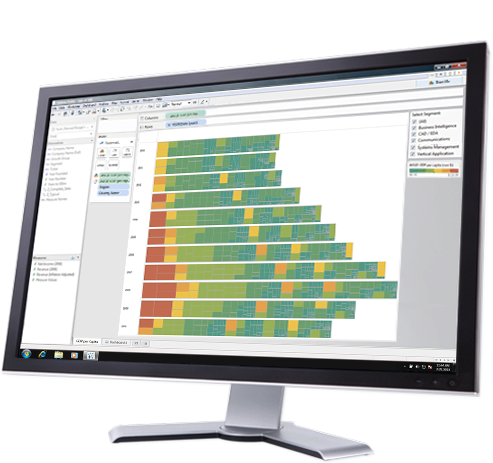Increased productivity, new innovations and smarter marketing are just a few advantages being realized by organizations that embrace big data.
Big Data Cloud Today!, an event held on June 7th in Mountain View, drew leaders from business and technology to discuss the next generation of Big Data use cases. Attendees to Big Data Cloud Today! learned emerging techniques, like 3d data visualization, to distill new insights from existing data. The event addressed the growth of big data, big data architectures, and identification of new business opportunities.
As I participant in the event, I would like to share a few of the insights and key learning’s that I felt offer the most value for Bodhtree customers and network. Milind Bhandarkar, Chief Scientist from Pivotal, Dr. Mayank Bawa, Co-President R&D Labs of from Teradata Aster, Jim Blomo Engineering Manager – Data-Mining, and Gail Ennis, CEO of Karmasphere, were a few experts who made this event truly impact full. Speakers presented first-hand experiences and lessons learned from Big Data early-adopter organizations.
Dr. Mayank Bawa (Co-President, R&D Labs, Teradata Aster) set the tone for the conference with an excellent keynote address. ‘Why is there such excitement around Big Data Analytics in the current environment?’ and ‘How are Big Data Services & Data Sciences Unique?’ were the two questions that framed his remarks. His presentation marvelously answered them with real-life use cases in two broad categories:
• “All kinds of data in a single platform”
• “All kinds of Analytics in a single platform”
To underscore these points, he presented various applications of Big Data Solutions such as ‘Market Basket Analysis’, ’Telecom and Churn analysis’, and ‘Predictive Modeling in Insurance Domain.’ Some of the interesting takeaways, challenges and open questions are as follows:
- How will technology progress to a unified architecture from the current state?
- The focus of every company is on building a platform that bring silos of data together and facilitates seamless dataflow across systems
- Empowering data sciences and improving analytical algorithms
- Relational vs. NoSQL:
- Is there a need to build SQL layer over NoSQL?
- Does it add any business value?
- Vision of oracle, Teradata in bringing relational and NoSQL together.
How to make Big Money from Big Data? – Sourabh Satish, Security Technologies & Response, CTOs Office, Symantec
While Dr. Bawa presented the motivation to build a unified architecture with better analytics, Sourabh Satish, Security Technologies and Response at Symantec, explored the advances offered by Big Data in the Security Domain. He demonstrated some of the security tools built at Symantec and illustrated how the three fields – Big Data, Data Science and Domain Expertise – can be leveraged for building an application.
Hadoop: A Foundation for Change – Milind Bhandarkar, Chief Scientist, Pivotal
If I had to design a metric to calculate the most relevant and valuable presentation in the conference, then without a doubt the gold standard would be set by Milind Bhandarkar, Chief Scientist of Pivotal. Mr. Bhandarkar talked about the evolution of analytics and big data and characterized by three distinct areas:
He went on to explore several key issues in the Big Data field:
• BI Vs. Big Data and Future
• Big Data’s journey from batch processing to interactive processing. Is interactive processing possible?
• Hadoop as a service?
• Applications as a service?
• Cloudera Impela bypassing MapReduce
• Myth around how huge (Big) is the volume of data used in analytics query (at Yahoo, Microsoft)
Why Hadoop is the New Infrastructure for the CMO (they may not know it yet!)- Gail Ennis CEO, Karmasphere
Gail Ennis talked about business use cases driving the demand for Big Data in today’s rapidly changing world, the journey of technology from BI to Big Data (predictive insights) and the potential of predictive analytics in Marketing and product Development.
Jim Blomo, Engineering Manager Data-Mining, Yelp
David P. Mariani, VP Engineering, Klout
The frank and energetic interaction between Professor Blomo and Mariani offered some of the most interesting discussion in the conference, including topics such as:
• How to identify whether a given problem is a BI Analytics problem or Big Data problem?
• Is existing BI framework needed? How Big Data evolves to be interactive BI
• How a company can form a data sciences group & their Journey in building their team
• What qualities they looked at while selecting Data scientists in their team as Data Scientist is not a role well defined across the industry
• Evolving technologies in data sciences and Big data (hive vs. cloudera imepala vs. shark)
• Is ETL on the fly possible
• Yelp and its work in data sciences
• Academic Education or Practical Experiences which helps in being a great Data Scientist
Rhaghav Karnam manages the Big Data Scientists group at Bodhtree, focusing on Big Data for customers in High Tech, Manufacturing, Life Sciences/Pharmaceuticals and government industries. Bodhtree enables its customers and partners for business transformation through Big Data and social-mining solutions laser focused on measurable business objectives.


